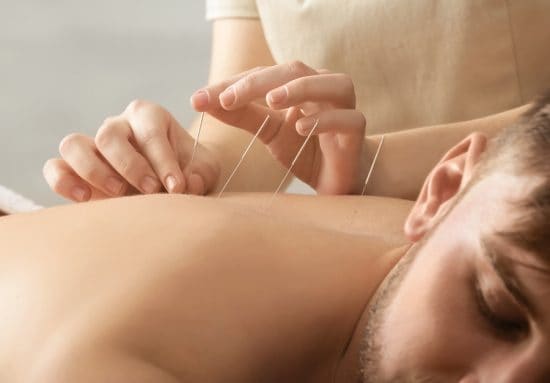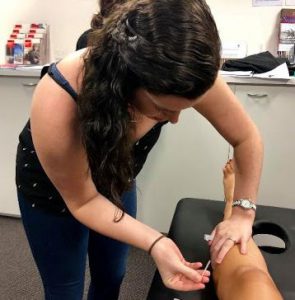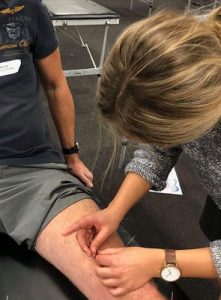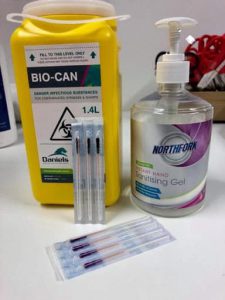
Dry needling is a technique used in physiotherapy practice where thin needles are inserted into a muscles “trigger points” to decrease pain and muscular tension. Thin needles are put into the altered or “dysfunctional” tissues in order to improve or restore function.
It is easy to think of dry needling as a western type of acupuncture where the treating physiotherapist uses needling alongside their anatomical knowledge and clinical reasoning.

Dry needling is believed to have effects on the release of chemical in the body by stimulating the nerve fibers nearby.
The nerve sends a signal along the spinal cord to the brain which can have several effects, including the release of chemicals and increasing blood flow.
This can provide pain relief for up to 2-3 days and creates a window of opportunity to retrain the muscles with less tightness and pain allowing us to address the underlying cause of the issue.

Trigger points within a muscle are described as hyper-irritable spots in our skeletal muscle.
They are associated with “knots” that can be felt in the muscle in a place where the muscle feels tight due to taut bands of muscle fibers.
Compression of a trigger point may elicit local tenderness, referred pain, or a “twitch response” in the muscle.
Muscles with active trigger points can appear to have weakness, decreased movement and can be sensitive to stretching/strengthening.
This picture is a good illustration of how muscle tissue can develop “tight spots” or trigger points.
Dry needling can play several different roles including:

Dry needling is normally done with the patient in a comfortable position such as lying down.
Pressure is then applied to the skin above the muscle to be treated which dulls the slight discomfort of the needle being inserted.
There are two different techniques that can then be used:
Yes, dry needling is very safe and only physiotherapists that have had specific training can practice dry needling. At all
3 practices of The Healthy Body Company we have physiotherapists qualified to do dry needling.
Before dry needling is considered your physiotherapist will ensure that with your medical history it is safe to do so, and you will always be asked for your consent before this treatment is performed. With each patient the goal of the treatment is discussed and at any time the needles can be removed by the physio if desired.

Before any treatment, physios are regularly washing their hands and using an
alcohol rub. The area to be treated can wiped down with an alcohol wipe to reduce any risk of infection.
The needles that we use in our practices are always brand new and sterile and are disposed of immediately following treatment. Similar to the flu shot, a small drop of blood can occur when the needle is removed in which case we gently compress the area. More than a spot of blood is very unlikely in dry needling, and often there is no bleeding at all.
We hope that this article has given you some more insight into dry needling but if you would like to have more information about this subject please feel free to contact any of our friendly physiotherapists in any of our three practices!
Information collated from Musculoskeletal Segmental and Dry Needling for Physiotherapists course.
Presented by McCutcheon, L & Montgomery, T. (2019).
Diagram: Simons, D. G., Travell, J. G., & Simons, L. S. (1999). Travell and Simons’ myofascial pain and
dysfunction: The trigger point manual. Volume 1. Upper half of body. (2 nd ed.). Baltimore: Williams &
Wilkins.